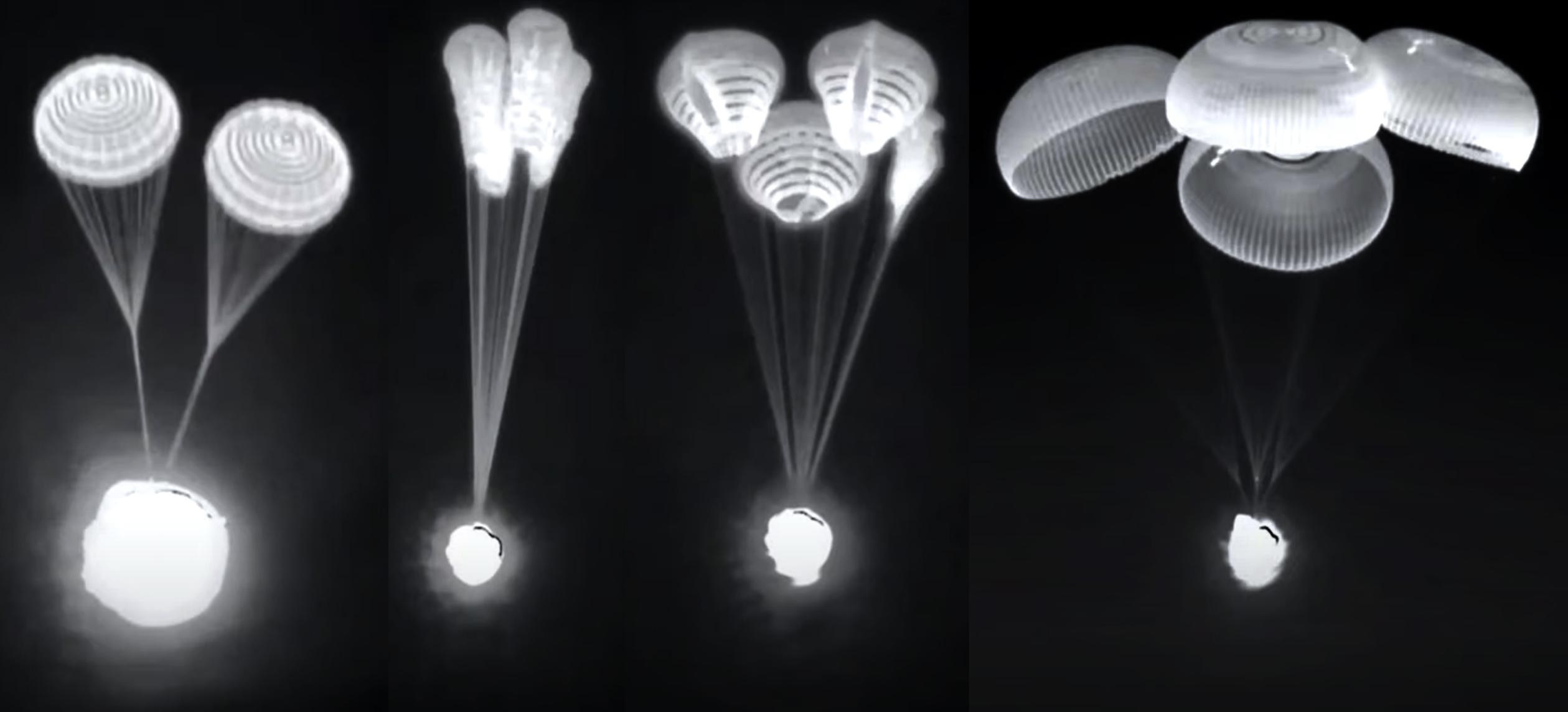
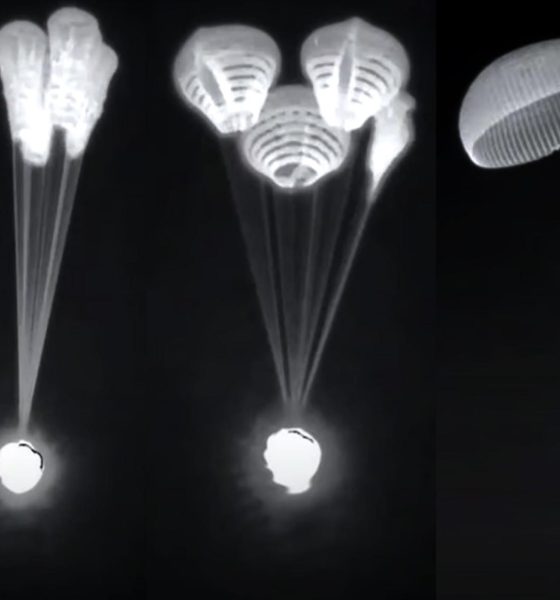
News
SpaceX, NASA investigating parachute ‘lag’ during latest Dragon recovery
On February 2nd, NASA officials reported that a SpaceX Cargo Dragon spacecraft suffered a minor parachute anomaly during its most recent reentry, descent, and splashdown.
On January 23rd, SpaceX’s CRS-24 Cargo Dragon 2 vehicle departed the International Space Station for the second time in less than six months with about 2.2 tons (~5000 lb) of science experiments, equipment, and refuse in tow. On January 24th, the Dragon successfully deorbited, reentered Earth’s atmosphere, deployed parachutes, and splashed down off of Florida’s Gulf Coast, where a SpaceX team quickly recovered the spacecraft and loaded time-sensitive cargo onto a waiting helicopter. Oddly, in an attempt to save perhaps a quarter of a percent of the total cost of the mission, NASA offered zero live coverage and didn’t even publish photos or videos of the Dragon recovery taken after the fact.
That left little more than social media posts for taxpayers who paid for the mission to experience it live. Ultimately, while those posts simply stated that the CRS-24 Dragon recovery was a success, they weren’t entirely accurate.
Mirroring behavior seen on Crew Dragon’s Crew-2 recovery in November 2021, NASA and SpaceX waited more than a week after the fact to report that one of Cargo Dragon’s four main parachutes also failed to fully inflate exactly when expected. However, while NASA and SpaceX withholding information is unsavory at best, the issue was once again minor.
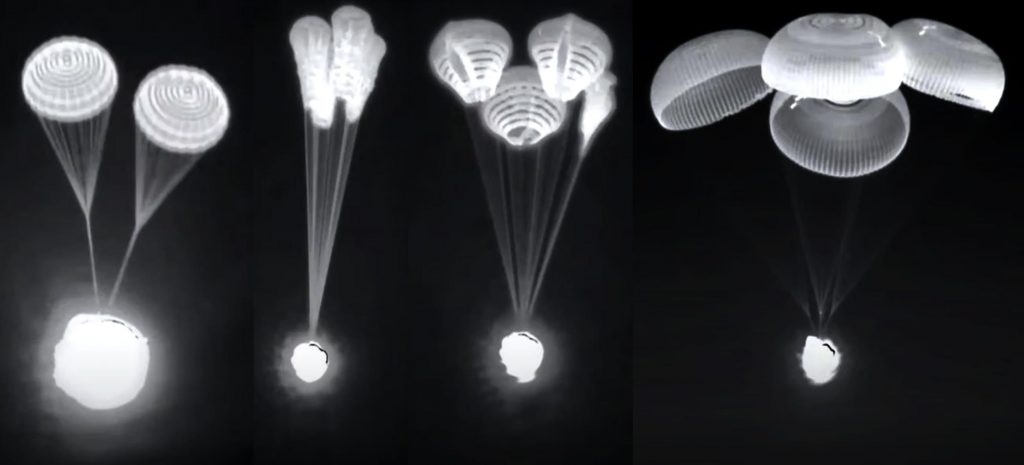
Just like Crew-2, the ‘lagging’ CRS-24 chute took about a minute longer than its siblings to fully inflate but did so well before splashdown. More importantly, CRS-24’s chute lag also failed to register in telemetry or recovered data, meaning that it had no significant impact on capsule descent rate or the force of impact upon splashdown. According to senior SpaceX flight reliability engineer Bill Gerstenmaier, “if you [only] look at the…data, you wouldn’t even detect the fact that the chutes [lagged on Crew-2 or CRS-24].”
In other words, the lagging chute inflation has been entirely harmless and completely inconsequential. Further, because Crew Dragon and Cargo Dragon 2 use four main chutes, they can safely return to Earth even if one of those chutes fails entirely. The fact that the actual telemetry shows nothing amiss with three – instead of – four chutes fully deployed effectively confirms as much, though SpaceX also completed more than a hundred different parachute drop tests verifying as much before Dragon 2’s first flight.
However, in human spaceflight, the saying “sometimes a cigar is just a cigar” could not be further from reality. Any deviation from expected behavior – no matter how harmless – must be carefully investigated because a lack of full understanding in one area may be a symptom of a larger organizational error or a sign of other unknown issues. Even if that’s rarely the case, NASA – where Gerstenmaier was an executive for 17 years – knows the cost of systemic complacency better than any other company or space agency on Earth. There is no room for it.
As such, even if the communication of the event was lacking, it’s abundantly clear that NASA and SpaceX are doing what needs to be done to remain vigilant and ensure the safety of Dragon and its parachutes.

News
Tesla’s six-seat extended wheelbase Model Y L sold out for January 2026
Estimated delivery dates for new Tesla Model Y L orders now extend all the way into February 2026.
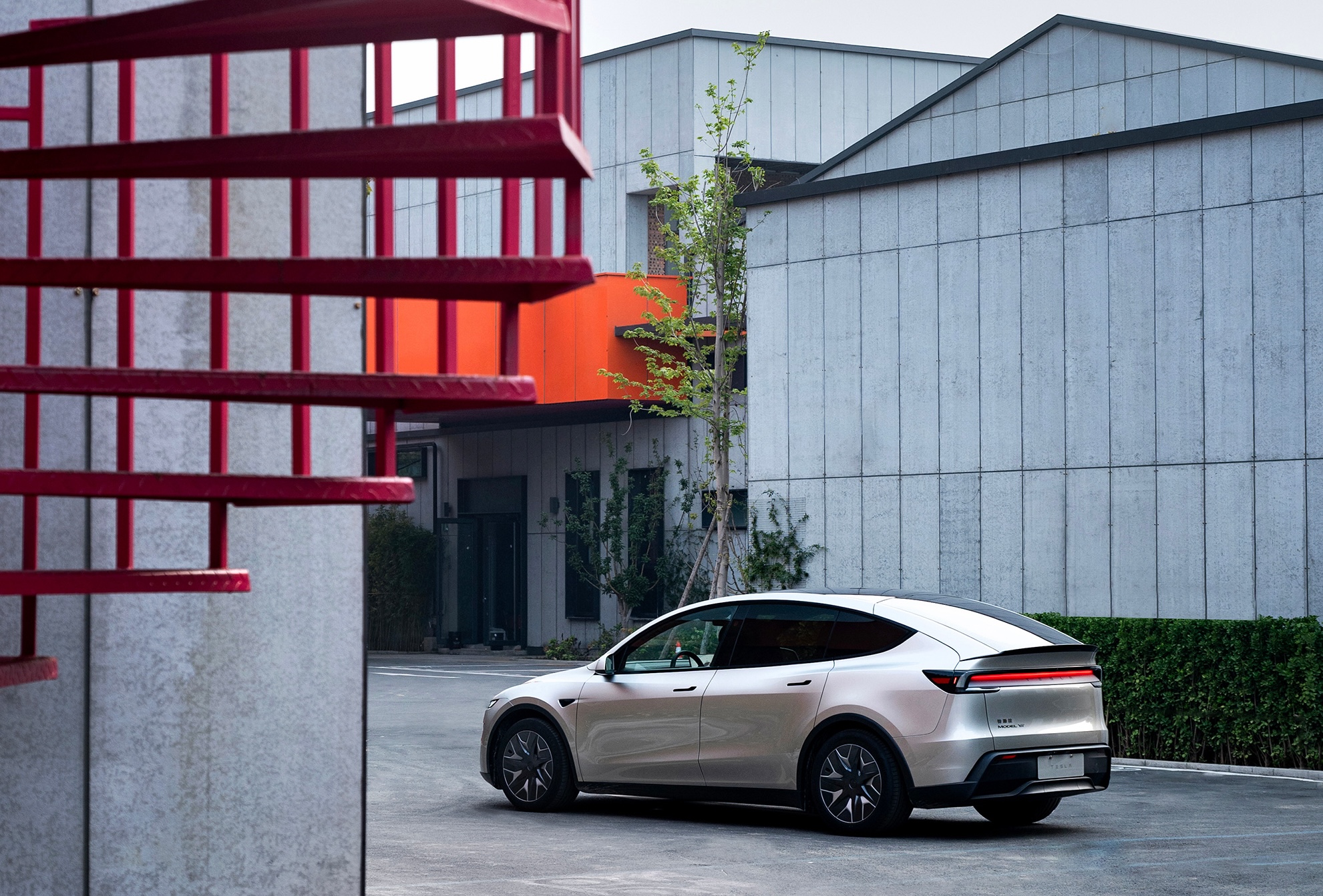
The Tesla Model Y L seems to be in high demand in China, with estimated delivery dates for new orders now extending all the way into February 2026.
This suggests that the Model Y L has been officially sold out from the rest of 2025 to January 2026.
Model Y L estimated delivery dates
The Model Y L’s updated delivery dates mark an extension from the vehicle’s previous 4-8 week estimated wait time. A detailed chart shared by Tesla data tracker @Tslachan on X shows the progressions of the Model Y L’s estimated delivery dates since its launch earlier this year.
Following its launch in September, the vehicle was given an initial October 2025 estimated delivery date. The wait times for the vehicle were continually updated over the years, until the middle of November, when the Model Y L had an estimated delivery date of 4-8 weeks. This remained until now, when Tesla China simply listed February 2026 as the estimated delivery date for new Model Y L orders.
Model Y demand in China
Tesla Model Y demand in China seems to be very healthy, even beyond the Model Y L. New delivery dates show the company has already sold out its allocation of the all-electric crossover for 2025. The Model Y has been the most popular vehicle in the world in both of the last two years, outpacing incredibly popular vehicles like the Toyota RAV4. In China, the EV market is substantially more saturated, with more competitors than in any other market.
Tesla has been particularly kind to the Chinese market, as it has launched trim levels for the Model Y in the country that are not available anywhere else, such as the Model Y L. Demand has been strong for the Model Y in China, with the vehicle ranking among the country’s top 5 New Energy Vehicles. Interestingly enough, vehicles that beat the Model Y in volume like the BYD Seagull are notably more affordable. Compared to vehicles that are comparably priced, the Model Y remains a strong seller in China.
Elon Musk
NVIDIA CEO Jensen Huang commends Tesla’s Elon Musk for early belief
“And when I announced DGX-1, nobody in the world wanted it. I had no purchase orders, not one. Nobody wanted to buy it. Nobody wanted to be part of it, except for Elon.”
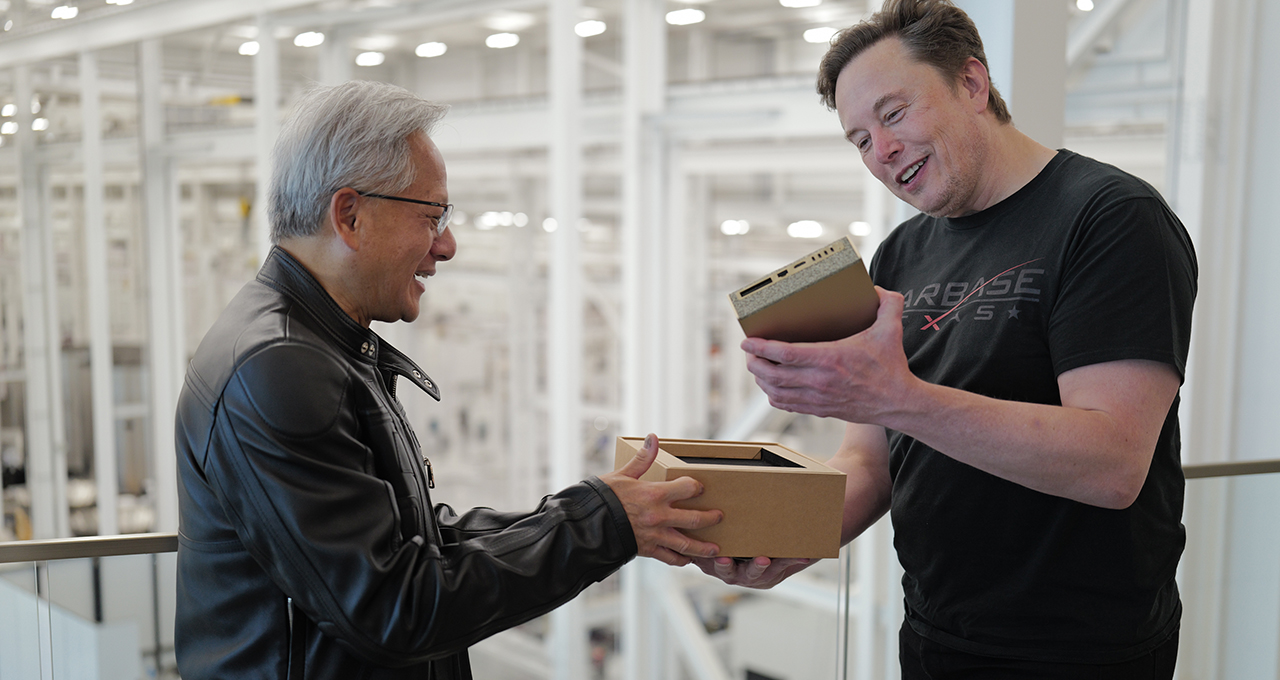
NVIDIA CEO Jensen Huang appeared on the Joe Rogan Experience podcast on Wednesday and commended Tesla CEO Elon Musk for his early belief in what is now the most valuable company in the world.
Huang and Musk are widely regarded as two of the greatest tech entrepreneurs of the modern era, with the two working in conjunction as NVIDIA’s chips are present in Tesla vehicles, particularly utilized for self-driving technology and data collection.
Nvidia CEO Jensen Huang regrets not investing more in Elon Musk’s xAI
Both CEOs defied all odds and created companies from virtually nothing. Musk joined Tesla in the early 2000s before the company had even established any plans to build a vehicle. Jensen created NVIDIA in the booth of a Denny’s restaurant, which has been memorialized with a plaque.
On the JRE episode, Rogan asked about Jensen’s relationship with Elon, to which the NVIDIA CEO said that Musk was there when nobody else was:
“I was lucky because I had known Elon Musk, and I helped him build the first computer for Model 3, the Model S, and when he wanted to start working on an autonomous vehicle. I helped him build the computer that went into the Model S AV system, his full self-driving system. We were basically the FSD computer version 1, and so we were already working together.
And when I announced DGX-1, nobody in the world wanted it. I had no purchase orders, not one. Nobody wanted to buy it. Nobody wanted to be part of it, except for Elon.
He goes ‘You know what, I have a company that could really use this.’ I said, Wow, my first customer. And he goes, it’s an AI company, and it’s a nonprofit and and we could really use one of these supercomputers. I boxed one up, I drove it up to San Francisco, and I delivered it to the Elon in 2016.”
The first DGX-1 AI supercomputer was delivered personally to Musk when he was with OpenAI, which provided crucial early compute power for AI research, accelerating breakthroughs in machine learning that underpin modern tools like ChatGPT.
Tesla’s Nvidia purchases could reach $4 billion this year: Musk
The long-term alliance between NVIDIA and Tesla has driven over $2 trillion in the company’s market value since 2016.
Elon Musk
GM CEO Mary Barra says she told Biden to give Tesla and Musk EV credit
“He was crediting me, and I said, ‘Actually, I think a lot of that credit goes to Elon and Tesla…You know me, Andrew. I don’t want to take credit for things.”
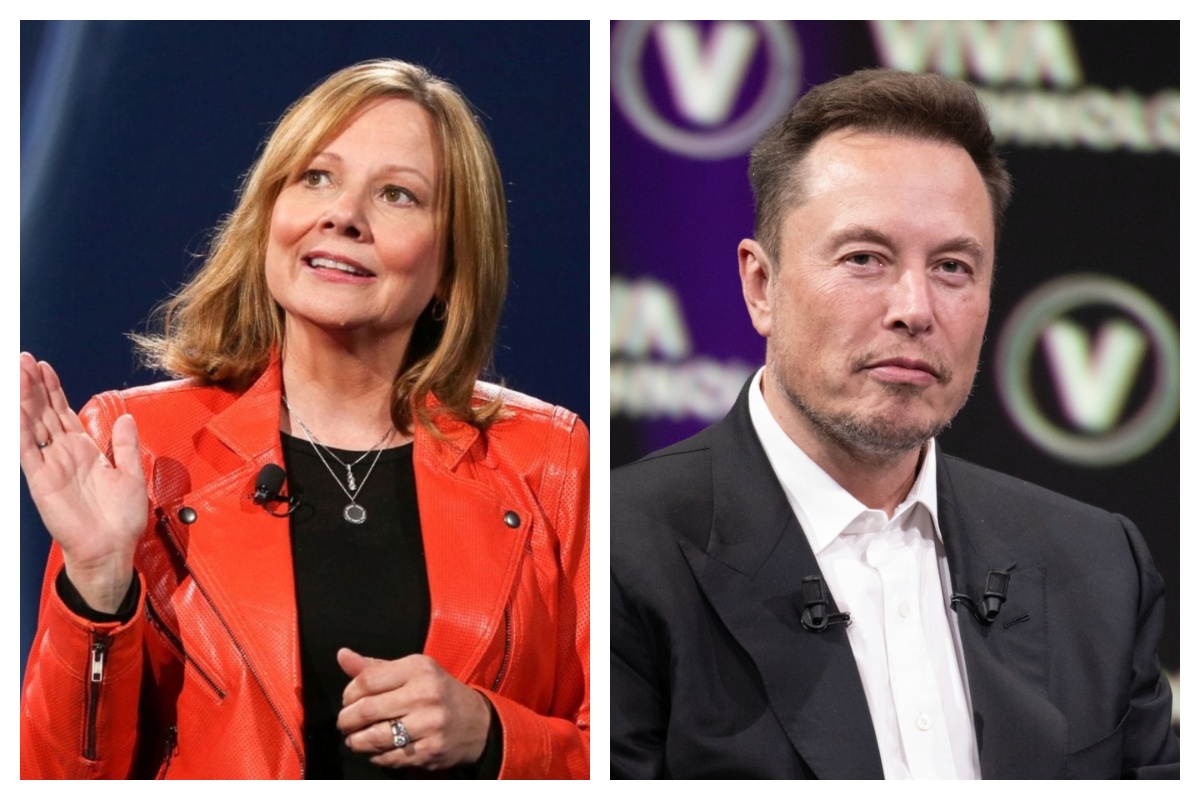
General Motors CEO Mary Barra said in a new interview on Wednesday that she told President Joe Biden to credit Tesla and its CEO, Elon Musk, for the widespread electric vehicle transition.
She said she told Biden this after the former President credited her and GM for leading EV efforts in the United States.
During an interview at the New York Times Dealbook Summit with Andrew Ross Sorkin, Barra said she told Biden that crediting her was essentially a mistake, and that Musk and Tesla should have been explicitly mentioned (via Business Insider):
“He was crediting me, and I said, ‘Actually, I think a lot of that credit goes to Elon and Tesla…You know me, Andrew. I don’t want to take credit for things.”
GM CEO Mary Barra said to Andrew Sorkin at the New York Times Dealbook Summit that she pulled President Biden aside and said Tesla CEO @elonmusk deserved the credit for EVs:
“He was crediting me, and I said, ‘Actually, I think a lot of that credit goes to Elon and Tesla,'” Barra… pic.twitter.com/OHBTG1QfbJ
— TESLARATI (@Teslarati) December 3, 2025
Back in 2021, President Biden visited GM’s “Factory Zero” plant in Detroit, which was the centerpiece of the company’s massive transition to EVs. The former President went on to discuss the EV industry, and claimed that GM and Barra were the true leaders who caused the change:
“In the auto industry, Detroit is leading the world in electric vehicles. You know how critical it is? Mary, I remember talking to you way back in January about the need for America to lead in electric vehicles. I can remember your dramatic announcement that by 2035, GM would be 100% electric. You changed the whole story, Mary. You did, Mary. You electrified the entire automotive industry. I’m serious. You led, and it matters.”
People were baffled by the President’s decision to highlight GM and Barra, and not Tesla and Musk, who truly started the transition to EVs. GM, Ford, and many other companies only followed in the footsteps of Tesla after it started to take market share from them.
Elon Musk and Tesla try to save legacy automakers from Déjà vu
Musk would eventually go on to talk about Biden’s words later on:
“They have so much power over the White House that they can exclude Tesla from an EV Summit. And, in case the first thing, in case that wasn’t enough, then you have President Biden with Mary Barra at a subsequent event, congratulating Mary for having led the EV revolution.”
In Q4 2021, which was shortly after Biden’s comments, Tesla delivered 300,000 EVs. GM delivered just 26.








